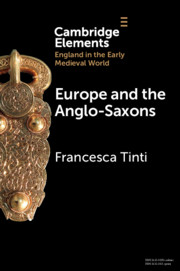Element contents
Europe and the Anglo-Saxons
Published online by Cambridge University Press: 29 July 2021
Summary
- Type
- Element
- Information
- Online ISBN: 9781108942898Publisher: Cambridge University PressPrint publication: 26 August 2021
Bibliography
Primary Sources
Secondary Sources
- 10
- Cited by

